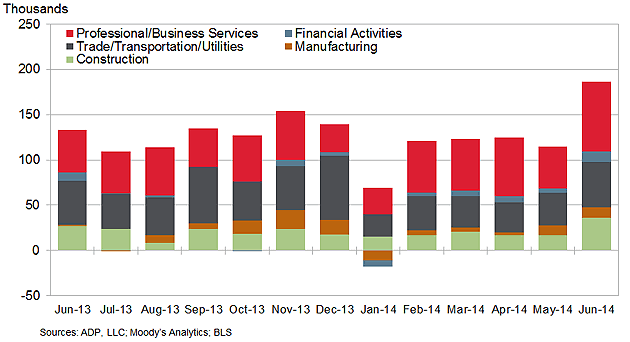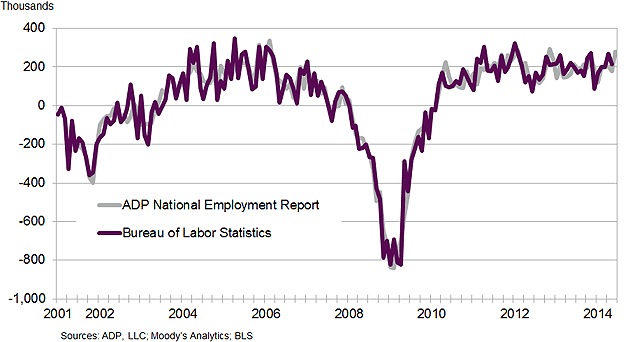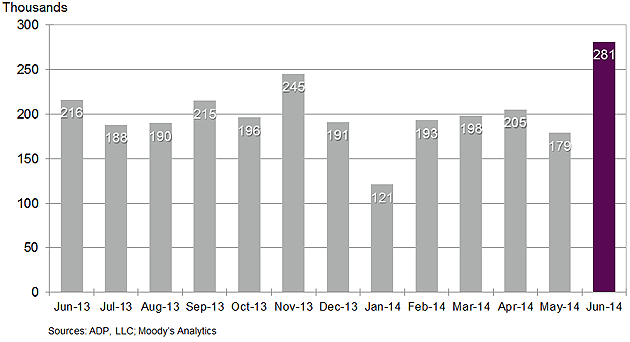The mini reprieve for the Australian dollar that started with the tanking trade deficit yesterday (down to 94.6 again) continued overnight as the US ADP jobs report (a private sector report that leads the official report tonight) jumped to its highest level in two years:
Private sector employment increased by 281,000 jobs from May to June according to the June ADP National Employment Report®. … The report, which is derived from ADP’s actual payroll data, measures the change in total nonfarm private employment each month on a seasonally-adjusted basis.
…Mark Zandi, chief economist of Moody’s Analytics, said, “The job market is steadily improving. Job gains are broad based across all industries and company sizes. Judging from the job market, the economic recovery remains fully intact and is gaining momentum.”
The job gains were broad based:

However, one should be careful to not read too much into the report for any one official Bureau of Labour Statistics report. The two work well in trend terms only:

Calculated Risk has a nice wrap going into tonight’s BLS:
The ADP employment report showed an increase of 281,000 private sector payroll jobs in June. This was above expectations of 210,000 private sector payroll jobs added.
• The ISM manufacturing employment index was unchanged in June at 52.8%. A historical correlation between the ISM manufacturing employment index and the BLS employment report for manufacturing, suggests that private sector BLS manufacturing payroll jobs decreased about 5,000 in June.
• Initial weekly unemployment claims averaged close to 314,000 in June, up slightly from May. For the BLS reference week (includes the 12th of the month), initial claims were at 314,000; this was down from 327,000 during the reference week in May.
• On small business hiring: The small business index from Intuit showed a 20,000 increase in small business employment in June.
• A few comments from Goldman Sachs economist Kris Dawsey:
We forecast a 210k increase in June payroll employment, just a bit less than the consensus expectation of 215k. On the one hand, ADP, initial claims, the labor differential, and the employment components of service sector surveys argue for a stronger report. On the other hand, consensus tends to be a bit too optimistic on June payrolls, and the “weather bounce-back” in employment after this winter’s slowdown could be losing some steam.
…
Labor differential heading north. The Conference Board’s labor differential―the net percent of respondents in the consumer confidence survey describing jobs as plentiful vs. hard to get―improved by 0.9pt in June to -17.1.• Conclusion: Most of the data was fairly positive in June with the exception of small business hiring. The ADP report was higher in June than in May, and well above forecasts, and weekly unemployment claims were lower during the reference period. However the Intuit small business index showed somewhat less hiring in June…There is always some randomness to the employment report, but the I’ll take the over on the consensus forecast of 211,000 nonfarm payrolls jobs added in June.
Be warned, there is more than a “little randomness” in monthly employment reports.


